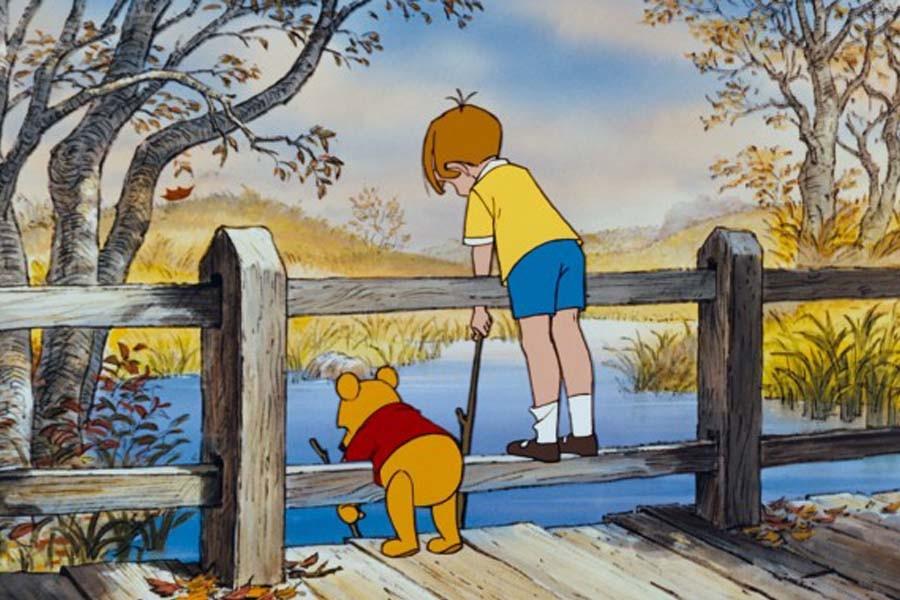
Winnie the Pooh (voiced by Sterling Holloway) and Christopher Robin play a game of "Poohsticks" together (Disney).
The output of Walt Disney Animation Studios–currently totaling 54 full-length films–has been cherished by audiences young and old for almost 80 years. In this weekly online feature, arts and entertainment editor Nathan Tucker will review and rank each of them.
The Seventies were not exactly the best of times at the Disney Animation Studio. In fact, things were the worst they had been since World War II had forced the company to release “package film” collections of shorts for second half of the Forties. So, it is not surprising that the company returned to the “anthologize old shorts instead of making new ones” mentality. What is surprising is how well The Many Adventures of Winnie the Pooh stands up, not merely as a charming set of shorts, but as a cohesive film.
Part of that quality is simply a matter of vintage: of the three Winnie the Pooh shorts integrated into the film, two were produced while Walt Disney was still alive and the Sherman Brothers still working for the studio–they have a “classic” feel. The rest is a testament to the appeal of A.A. Milne’s original characters and a commitment by the studio to maintaining that appeal. While the Disney shorts pale in comparison to the subtle wit Milne achieved in his two Pooh novels, they remain faithful to the sense and style of its humor. The playful use of a storybook motif allows the production to preserve more of Milne’s gags than they might otherwise have been discarded .
Better yet, some innovations of the shorts actually improve the stories. Sterling Holloway’s mumbly deadpan is the definitive voice for Winnie the Pooh, an exact blend of droll innocence; the remainder of the cast acquit themselves almost as well. The shorts often blend two or more chapters together into a thematic whole, helping the film gain something resembling a narrative arc. While the book’s illustrations engender a nostalgic endearment, the animation retains their essential charm and adds motion. Unlike the other post-Dalmatians films, Pooh’s animation has a motive beyond “be as cheap as possible”: everything is rounded and softened, from the stuffed animal character designs to the lightly drawn backgrounds. Add the bright gallop of the Shermans’ title song, and a delightful film emerges.
Ultimately, The Many Adventures of Winnie the Pooh is cinematic comfort food, as sweet and irresistible as a pot of “hunny.” One could claim that it was too simple, too childish–but that would be missing the entire point. In Winnie the Pooh, childhood is not something one grows out of, or that is lost as they enter the world; rather, it is an enchanted place, returned to again and again.
The List:
Bambi
Sleeping Beauty
The Many Adventures of Winnie the Pooh
Lady and the Tramp
The Jungle Book
Alice in Wonderland
Fantasia
Pinocchio
Robin Hood
One Hundred and One Dalmatians
Peter Pan
The Adventures of Ichabod and Mr. Toad
Cinderella
Dumbo
The Aristocats
The Sword in the Stone
Melody Time
Snow White and the Seven Dwarfs
Fun and Fancy Free
Saludos Amigos
Make Mine Music
The Three Caballeros
